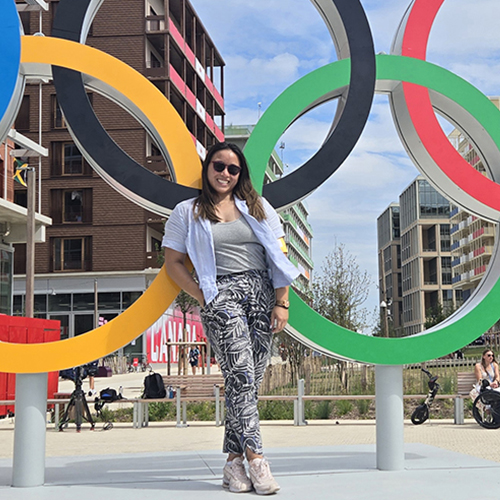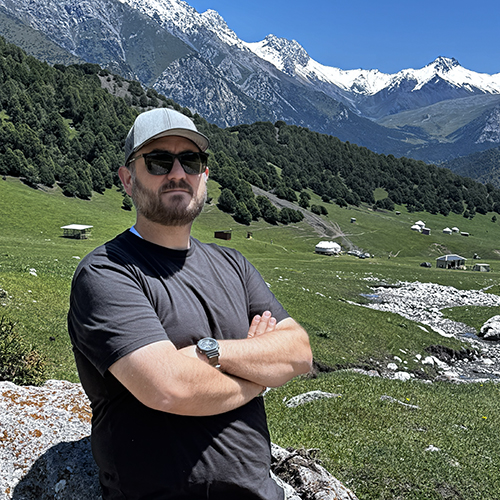When twins Khoi and Qui Nguyen signed up for their high school math team last year, they represented more than one quarter of the team. But when they attended the Summer Institute for Mathematics last summer, they were joined by a larger group of peers similarly enamored of mathematics.
“I’d never met so many people interested in math in one place,” recalls Qui.

That’s the beauty of the Summer Institute for Mathematics at the UW (SIMUW), a six-week program offered by the UW Department of Mathematics. The program was introduced in 2003 with support from an anonymous donor.
SIMUW brings together 24 high school students with a shared passion for mathematics. They live together in campus dorms and spend their days immersed in math. They also take field trips—Mariners games and Lake Washington cruises are favorites—and organize social events ranging from ultimate frisbee games to talent shows. The goal is to introduce the students to advanced mathematics while creating a community of like-minded peers.
“For some participants, the most astonishing part is not having to explain, apologize for, or be embarrassed by what you do,” says Ron Irving, professor of mathematics and executive director of SIMUW, who attended similar programs himself as a teen. “Here, enjoying math isn’t quirky. It’s normal. The students can finally be themselves.”
Irving runs the program with Jim Morrow and Sándor Kovács, professors of mathematics, and Paul LePore, assistant dean for educational programs in the College of Arts and Sciences. The math faculty plan the institute’s academic content while LePore serves as residential director. Six teaching assistant/counselors (TACs) live in the dorms with the students and attend their classes. “The TACs are the linchpin of the whole system,” says LePore. “They link the academic and residential aspects.”
Four days a week, the students meet with faculty to explore math topics that run the gamut from number theory to mathematical methods for climate modeling. Wednesdays are reserved for special topics presented by guest lecturers.
The math is not an accelerated version of what students typically see in high school and college; instead it introduces them to a wider variety of concepts, many of which are not covered until graduate school. “We want the students to see math as mathematicians think of it,” says Irving. “We want them to see math as something that’s beautiful and fun, not just a tool to be used in classes.”
It’s the math that makes this happen, but the program is a lot more than that. It’s finding out who you are, learning how to be independent and how to share within a community.
Given the ambitious curriculum, selecting capable students is key. SIMUW’s application process discourages all but the most motivated. In addition to providing a personal statement, transcript, and letters of recommendation, applicants are posed eight proof-oriented math problems that would stump even the most advanced high schooler.
Faculty don’t expect the applicants to solve all the problems. They are more interested in seeing how they approach them. Of course the students don’t know that.
“I don’t think anyone got all the problems,” says Vishnu Manoranjan, a high school senior from Pullman, Washington. “But you don’t know that until you arrive, so there’s some anxiety. You wonder how you got in.”
That wasn’t Manoranjan’s only welcome realization when he arrived. He also found that the group was more well-rounded than he had expected. “I had the sense that everyone would be all about the math,” he says, “but a lot of the people have different interests. Almost everyone plays an instrument, some play varsity sports, some are interested in comic books.”

Max Li, a senior from Richland, Washington, attended the institute two consecutive summers. It was interesting, he says, to experience the program twice. “Both years were great, but they were completely different due to the different cast of
characters.” His favorite part? All the inside jokes the group shared based on what they were learning in class.
Several TACs have participated multiple years as well. Steve Klee, a UW graduate student, served as a TAC for the third time in 2008. Although TACs work non-stop for six weeks, juggling academic and residential duties, he has found the experience energizing.
“When I TA for calculus courses during the school year, most students see it as a class they have to take,” says Klee. “But the SIMUW students are excited by math. One of my favorite things is the off-the-cuff conversations that happen at night or at the breakfast table about different things about math we think are cool.”
Bridget Cook, another returning TAC, is amazed at the level of the participants. “They‘re doing things I didn’t see until my third or fourth year as an undergraduate,” says Cook, who teaches math at Kentridge High School in Kent, Washington. “There’s a moment of shock when I think, ‘They’re really learning this! And they’re catching on faster than I am!’”

Also satisfying for the TACs is watching the students take ownership of the program. In the first few weeks, the TACs plan group activities to create a sense of community. By the third week, the students begin proposing their own ideas, from poker tournaments to karaoke nights. Many participants are teary-eyed when the program ends, having become a tight-knit group.
“We work really hard to build that sense of community,” says LePore. “We attend to the details, train the staff well, and have the staff put every bit of energy into this. And yet it still never ceases to amaze people how magical the process is.”
The students who participate agree. “It’s the math that makes this happen,” says Manoranjan, “but the program is a lot more than that. It’s finding out who you are, learning how to be independent and how to share within a community.
“I just wish I’d heard about it earlier,” adds the high school senior, “so I could come again next year.”
More Stories

A Sports Obsession Inspires a Career
Thuc Nhi Nguyen got her start the UW Daily. Now she's a sports reporter for Los Angeles Times, writing about the Lakers and the Olympics.

Through Soil Science, an Adventure in Kyrgyzstan
Chemistry PhD alum Jonathan Cox spent most of 2025 in Kyrgyzstan, helping farmers improve their soil—and their crops—through soil testing.

A Healing Heart Returns
In February, the UW Symphony will perform a symphony that Coast Salish elder Vi Hilbert commissioned years ago to heal the world after the heartbreak of 9/11. The symphony was first performed by the Seattle Symphony in 2006.